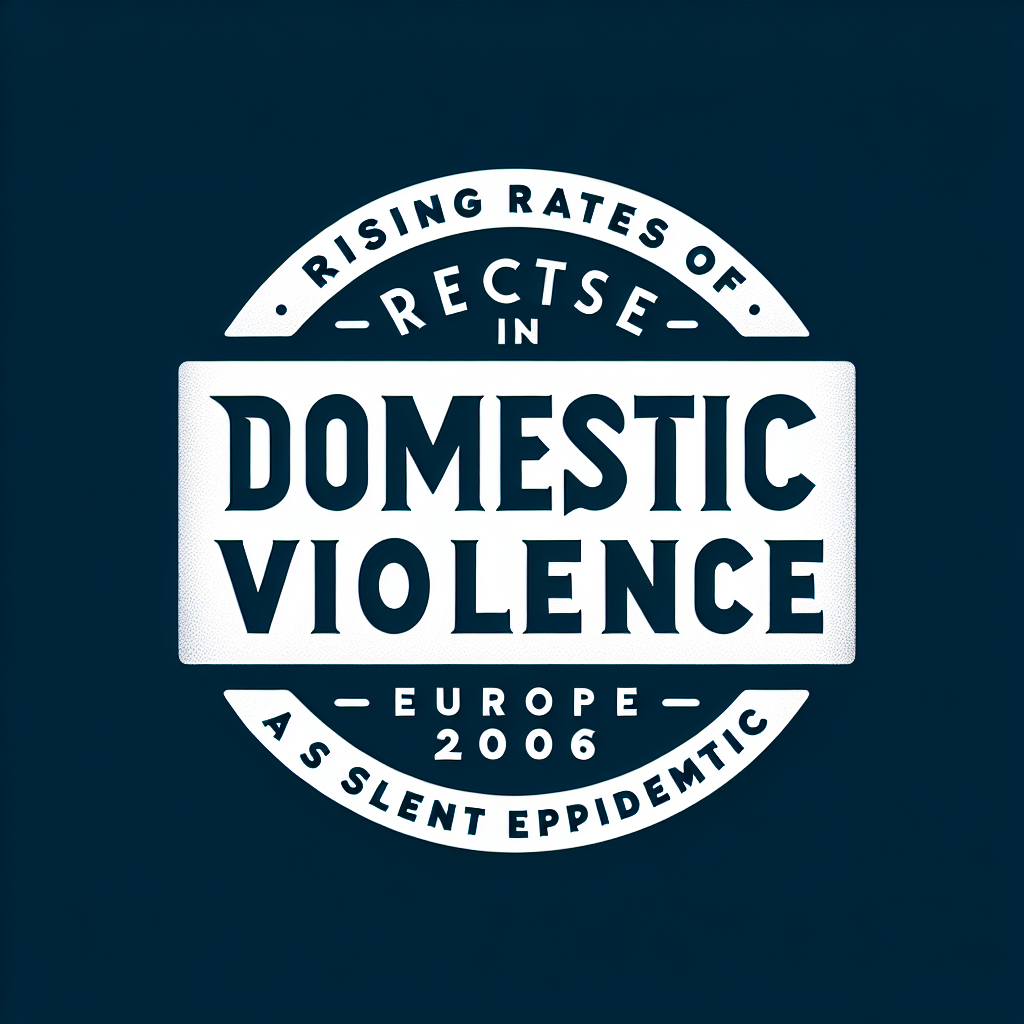The issue of domestic violence is a pervasive problem that affects individuals of all ages, genders, and backgrounds. In recent years, there has been a concerning rise in rates of domestic violence in Europe, sparking alarm among lawmakers, advocates, and communities. While this silent epidemic may not always make the headlines, its impact is profound and far-reaching. In this article, we will explore the rising rates of domestic violence in Europe, examine the factors driving this trend, and discuss potential solutions to address this urgent issue.
The Scope of the Problem
Domestic violence encompasses a range of abusive behaviors, including physical, emotional, sexual, and financial abuse. It can occur in intimate partner relationships, within families, and even among friends or acquaintances. According to recent data, the rates of domestic violence in Europe have been on the rise, with reports indicating a significant increase in incidents across the continent.
One of the key challenges in addressing domestic violence is underreporting. Many survivors may be reluctant to come forward due to fear of reprisal, shame, or lack of support. As a result, the true scale of the problem may be much higher than official statistics indicate.
Factors Driving the Trend
There are several factors that may be contributing to the rising rates of domestic violence in Europe. These include:
– Economic stress and insecurity: Financial strains can exacerbate tensions within relationships and increase the likelihood of abusive behaviors.
– Cultural norms and attitudes: Traditional gender roles and societal expectations may perpetuate myths about domestic violence and discourage survivors from seeking help.
– Access to support services: Limited resources, long wait times, and stigma surrounding mental health may serve as barriers to seeking assistance.
– Immigration and displacement: Migrants and refugees may face increased vulnerability to domestic violence due to language barriers, lack of legal protection, and isolation from support networks.
It is essential to address these underlying factors in order to effectively combat domestic violence and create a safer, more supportive environment for survivors.
Impact on Individuals and Communities
The consequences of domestic violence can be devastating, not only for survivors but also for their families and communities. It can lead to physical injuries, psychological trauma, economic instability, and social isolation. Children who witness domestic violence may experience long-term emotional and behavioral issues, perpetuating a cycle of abuse across generations.
In addition to the personal toll, domestic violence also has broader societal impacts, including increased healthcare costs, lost productivity, and strain on social services. It is crucial for policymakers, advocates, and community members to work together to address these challenges and create a more inclusive and supportive society for all.
“Domestic violence is a global issue that requires a coordinated and comprehensive response. We must prioritize the safety and well-being of survivors, hold perpetrators accountable, and challenge the systemic inequalities that perpetuate abuse.” – Maya Angelou
Addressing the Crisis
In order to effectively address the rising rates of domestic violence in Europe, it is essential to take a multi-faceted approach that includes the following strategies:
– Increase funding for support services: Invest in shelters, counseling programs, legal aid, and other resources to help survivors rebuild their lives and access justice.
– Raise awareness and education: Promote public campaigns, school curriculum, and community workshops to challenge stereotypes, empower survivors, and prevent future violence.
– Enhance legal protections: Strengthen laws, policies, and enforcement mechanisms to hold perpetrators accountable, protect survivors’ rights, and prevent re-victimization.
– Foster collaboration and coordination: Build partnerships between government agencies, non-profit organizations, healthcare providers, and law enforcement to ensure a coordinated response to domestic violence.
By implementing these strategies and prioritizing the well-being of survivors, we can take significant steps towards addressing the silent epidemic of domestic violence in Europe and creating a safer, more equitable society for all.
In conclusion, the rising rates of domestic violence in Europe represent a pressing public health crisis that requires immediate attention and action. By raising awareness, increasing support services, addressing underlying factors, and fostering collaboration, we can work towards a future where every individual can live free from fear and abuse. It is time for all of us to stand in solidarity with survivors, challenge harmful attitudes and behaviors, and create a world where domestic violence is no longer tolerated or ignored. Let us come together to make a difference and create a more just and compassionate society for all.
domestic violence in europe
What are the potential benefits and drawbacks of remote work for businesses?



















